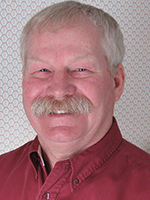
Are you in sync with your customers? Here’s what they are saying! (Jon Urness)
Click here to download Urness’ PowerPoint presentation.
 By Jon Urness, Vita Plus national forage specialist
By Jon Urness, Vita Plus national forage specialist
Harvest is often a time of high stress on dairies looking to put up high-quality forages and high moisture grains. The window of opportunity is often ridiculously narrow. Relationships between dairy producers and their custom harvesters can be stretched to the breaking point.
During the recent Vita Plus Custom Harvester Meeting, we revealed the results of a comprehensive harvester/client survey designed to find out if the two parties are on the same page and to possibly identify areas of conflict that may be particularly sensitive.
Before the survey was conducted, Jon Orr, vice president of the U.S. Custom Harvesters Inc. said, “Knowing the producer’s goals is the biggest thing. Sure, we need to show up on time and do those things right, but knowing what is wanted is a big deal. Those pre-harvest meetings and communication are critical.”
Right on cue and in agreement with Orr, when the survey results came back, a very insightful dairy producer commented, “Communication. We are not able to harvest our forage in a timely manner without a custom harvester. We need to be willing to work with a custom harvester when there are conflicts and remember that we truly need each other.”
How does all this good communication occur? For better or worse, the survey showed it is done mostly informally.
All dairy producers responding to the survey agreed that pre-harvest meetings with their harvesters are helpful, but only 42 percent indicated that they “always” have such meetings. Another 47 percent said they “sometimes” have pre-harvest meetings.
From the custom harvester perspective, the numbers are slightly different, although 91 percent say they “sometimes” or “always” have pre-harvest meetings with their clients. Almost 70 percent of harvesters believe these meetings are “very helpful” and another 26 percent deem such discussions as “helpful.”
What are the sources of conflict between dairy producers and custom harvesters?
The answer to that question today is likely very different from even a few years ago, according to this Vita Plus survey.
Five years ago Gary Sipiorski, Vita Plus dairy development manager, told custom harvesters the top two causes of client/producer relationships falling apart involved money. At that time, inaccurate charges by the custom harvester and bills not paid by the producer were the two big issues.
The dairy economy has improved since then and it’s likely that both custom harvesters and dairy producers are increasingly becoming more business savvy.
Today, about 11 percent of producers listed such concerns as “very common” and another 16 percent responded with “common.” In contrast, custom choppers didn’t list them as “very common” at all and 27 percent said it was “common.” Payment issues have been reduced in recent years, but some frustrations still exist in this area.
In the survey, dairy producers revealed that the leading cause of conflict today is harvest timeliness and related moisture and maturity consequences. More than 26 percent of producers listed harvest timeliness as a “very common” source of potential conflict. Another 16 percent said it was “common.”
Custom harvesters seem a little more sensitive to this issue because 35 percent listed harvest timeliness as a “very common” area of potential conflict. Another 44 percent listed it as “common.” That means 79 percent of custom harvesters believe harvest timeliness is a top area of concern.
Based on the results of this survey, dairy producers and custom harvesters share most of the same concerns and at similar levels. It may be surprising how few formal written contracts are signed between parties and points out the critical need for communication, including pre-harvest meetings or discussions, contact between the machine operator and the herd owner or manager during harvest, and post-harvest evaluation.
| Category: |
Business and economics Forage Foundations Forage harvesting |

